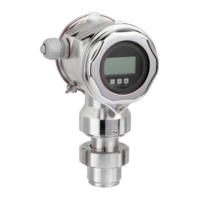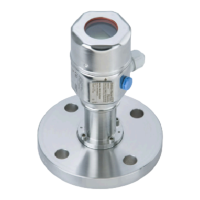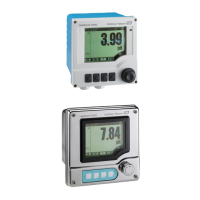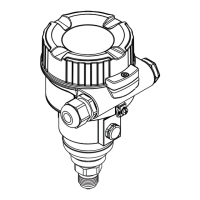Deltapilot M FMB50/51/52/53
4 Endress+Hauser
Function and system design
Device selection
Deltapilot M –
Product family
FMB50
P01-FMB5xxxx-14-xx-xx-xx-000
Compact version
FMB51
P01-FMB5xxxx-14-xx-xx-xx-001
Rod version
FMB52
P01-FMB5xxxx-14-xx-xx-xx-002
Cable version
FMB53
P01-FMB5xxxx-14-xx-xx-xx-003
Cable version with
mounting clamp
Field of application – Level measurement
– Pressure measurement
Industries Food, pharmaceuticals, chemicals Environment (freshwater and
wastewater)
Process connections – Thread
– Flanges
– Flush-mounted hygienic
connections
–Thread
– Flanges
–Thread
–Flanges
Suspension clamp
Measuring ranges From –0.1 to +0.1 (-1,5 to +1,5 psi) bar to –1 bar to +10 bar (-15 to 150 psi)
OPL
1)
Max. 40 bar (600 psi)
Process temperature range –10 to +100°C (+14 to +212°F)
(+135°C (275°F) for 30 minutes
maximum)
–10 to +85°C
(+14 to +185°F)
With PE cable: –10 to +70°C (+14 to +158°F)
With FEP cable: –10 to +80°C (+14 to +176°F)
Ambient temperature range • Without LCD display: -40 to +85°C (-40 to +185°F)
• With LCD display: -20 to +70°C (-4 to +158°F) (extended temperature application range -40 to 85°C (-40 to +158°F) with
restrictions in optical properties such as display speed and contrast)
• Separate housing: –20 to +60°C (–4 to +140°F)
Reference accuracy 0.2 % (option 0.1 %) depends on the measuring range → ä 21
Supply voltage – 11.5 to 45 V DC (versions with plug-in connection 35 V DC)
– For intrinsically safe device versions: 11.5 to 30 V DC
Output 4 to 20 mA with superimposed HART protocol, PROFIBUS PA or FOUNDATION Fieldbus
Options – Gold/rhodium-coated process isolating diaphragm
– 3.1 inspection certificate
– 3A approval and EHEDG approval for FMB50
– Specific firmware versions
– Initial device settings can be ordered
– Separate housing
Specialties – Absolute resistance to condensate thanks to hermetically sealed CONTITE
TM
cell
– Maximum flexibility thanks to modular design
– Special cleaning of the transmitter to remove paint-wetting substances, for use in paint shops
1) OPL = over pressure limit; depends on the lowest-rated element, with regard to pressure, of the selected components
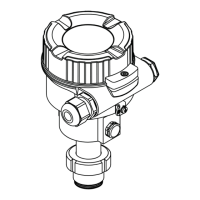
